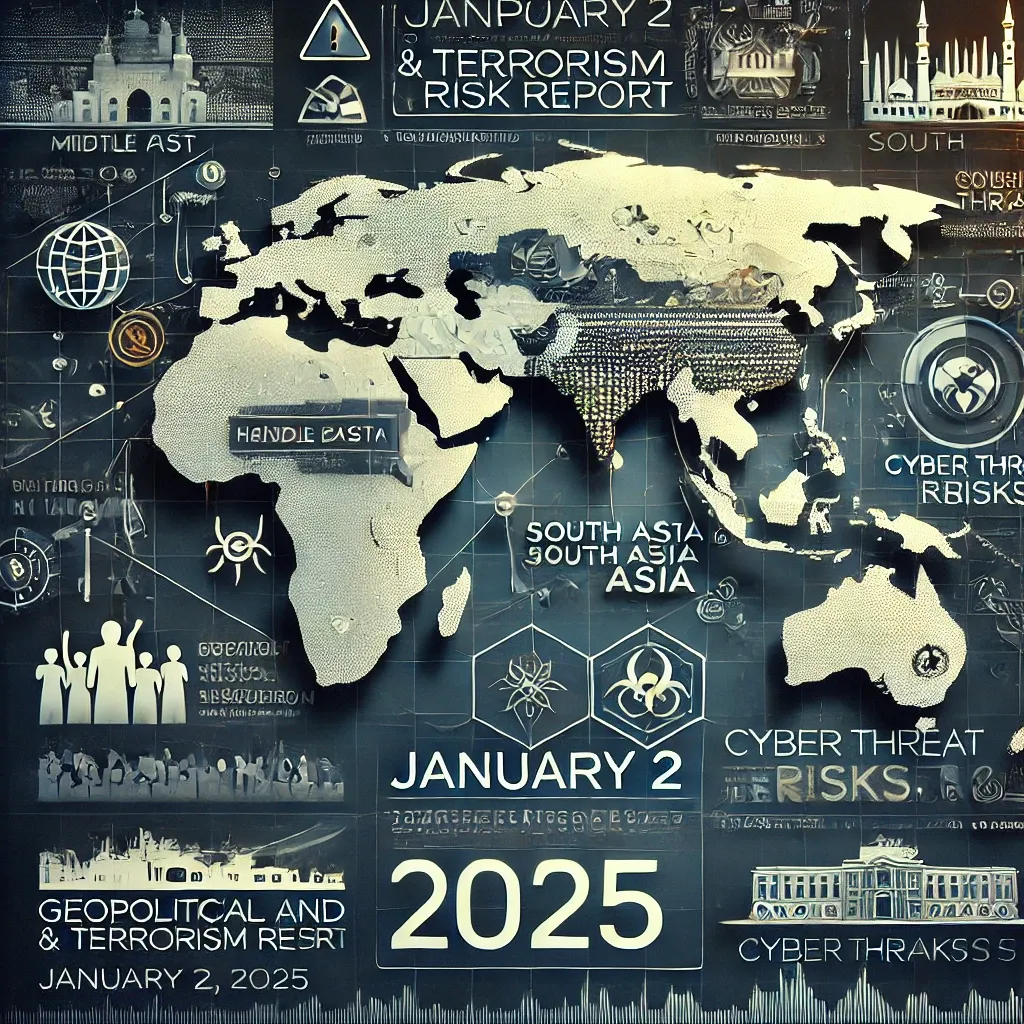Prime Rogue Daily Risk Report: January 2, 2025
Executive Summary
January 2, 2025, presents critical risks shaped by historical symbolism, ongoing geopolitical tensions, and anticipated threats. Key anniversaries, such as the fall of Granada (1492), provide a backdrop for nationalist and ideological narratives, while current events, including escalating cyber and regional tensions, underscore the need for heightened vigilance. This report outlines significant global risks and actionable insights for stakeholders.
1. Historical Significance and Symbolism
- Fall of Granada (1492):
- The surrender of the Emirate of Granada to Spanish forces concluded the Reconquista. This event carries symbolic weight, often invoked in nationalist rhetoric in Spain and Europe, potentially influencing far-right and counter-extremist activities on this day.
- Battle of Stalingrad (1943):
- The Soviet Union’s victory in this pivotal World War II battle is often commemorated, particularly in Russia. Current tensions with NATO could amplify nationalist displays or protests.
2. Current Events Shaping Risks
- Middle East Tensions:
- Following escalations in Gaza and Israel, proxy groups supported by Iran may target US or allied interests in the region. Energy infrastructure remains particularly vulnerable.
- US-China Trade Disputes:
- With economic tensions high, the potential for cyberattacks targeting financial institutions and supply chain disruptions continues to rise.
- Protests in Europe:
- Nationalist and anti-immigration protests tied to historical anniversaries are expected in Spain, Germany, and France, where far-right groups are increasingly active.
3. Predictive Analysis
Potential Targets
- Cultural and Religious Sites:
- Historical significance may draw gatherings, such as mosques or cathedrals linked to the Reconquista, increasing the risk of ideological attacks.
- Public Infrastructure:
- Transportation hubs and urban centers remain at risk from opportunistic or symbolic attacks, especially during high-profile dates.
- Cyber Targets:
- Financial institutions and energy infrastructure are likely targets of ransomware or espionage-focused attacks from state-sponsored groups.
Likely Attack Types
- IEDs and Armed Assaults:
- Likely in regions of ongoing sectarian conflict or high visibility, such as South Asia or the Middle East.
- Cyberattacks:
- Expected in response to global tensions, particularly targeting Western financial systems and government infrastructure.
- Protests Escalating to Violence:
- Far-right or anti-immigration demonstrations in Europe may devolve into clashes with counter-protesters or law enforcement.
High-Risk Regions
- Europe:
- Spain and France are particularly sensitive due to anniversaries and ongoing political tensions.
- South Asia:
- Rising communal tensions in India and Pakistan may lead to targeted violence or bombings.
- Middle East:
- Proxy conflicts could escalate into direct attacks on critical infrastructure.
4. Implications for Stakeholders
For Businesses:
- Cybersecurity: Bolster defenses against potential ransomware attacks, particularly in finance and energy sectors.
- Crisis Management: Ensure continuity plans account for supply chain disruptions due to geopolitical instability.
For Government Agencies:
- Public Safety: Heighten security at historical sites and urban centers linked to nationalist movements.
- Diplomatic Efforts: Engage in de-escalatory measures in regions like the Middle East and South Asia to reduce the risk of spillover violence.
For the Public:
- Vigilance: Avoid large gatherings in high-risk areas and stay informed through official channels.
- Preparedness: Familiarize yourself with emergency procedures and safe zones in public spaces.
Conclusion
January 2, 2025, highlights the intersection of historical commemoration, ongoing geopolitical tensions, and modern threats like cyberattacks. Stakeholders are urged to remain proactive, leveraging this report’s insights to navigate the complexities of an interconnected and volatile world.
